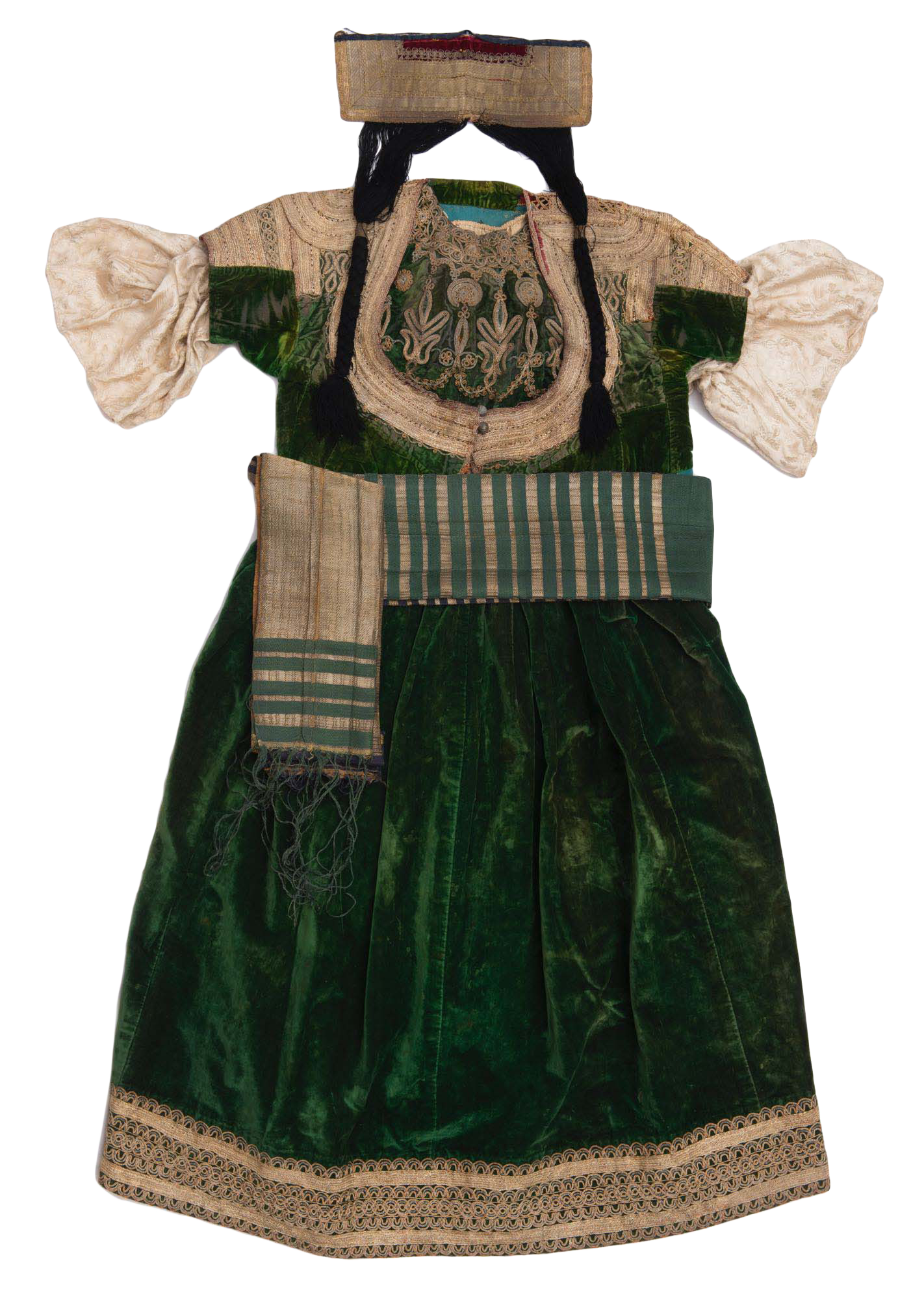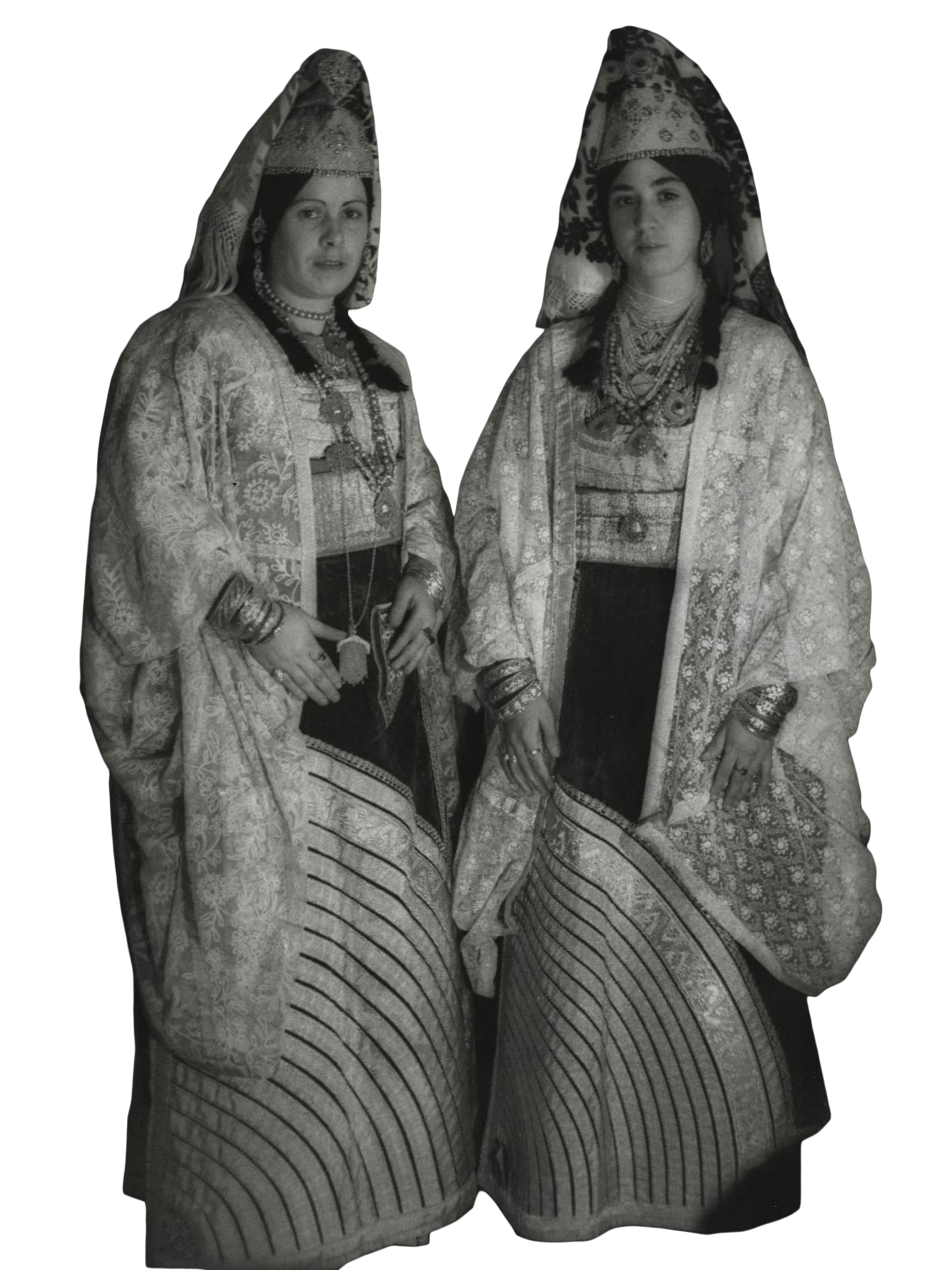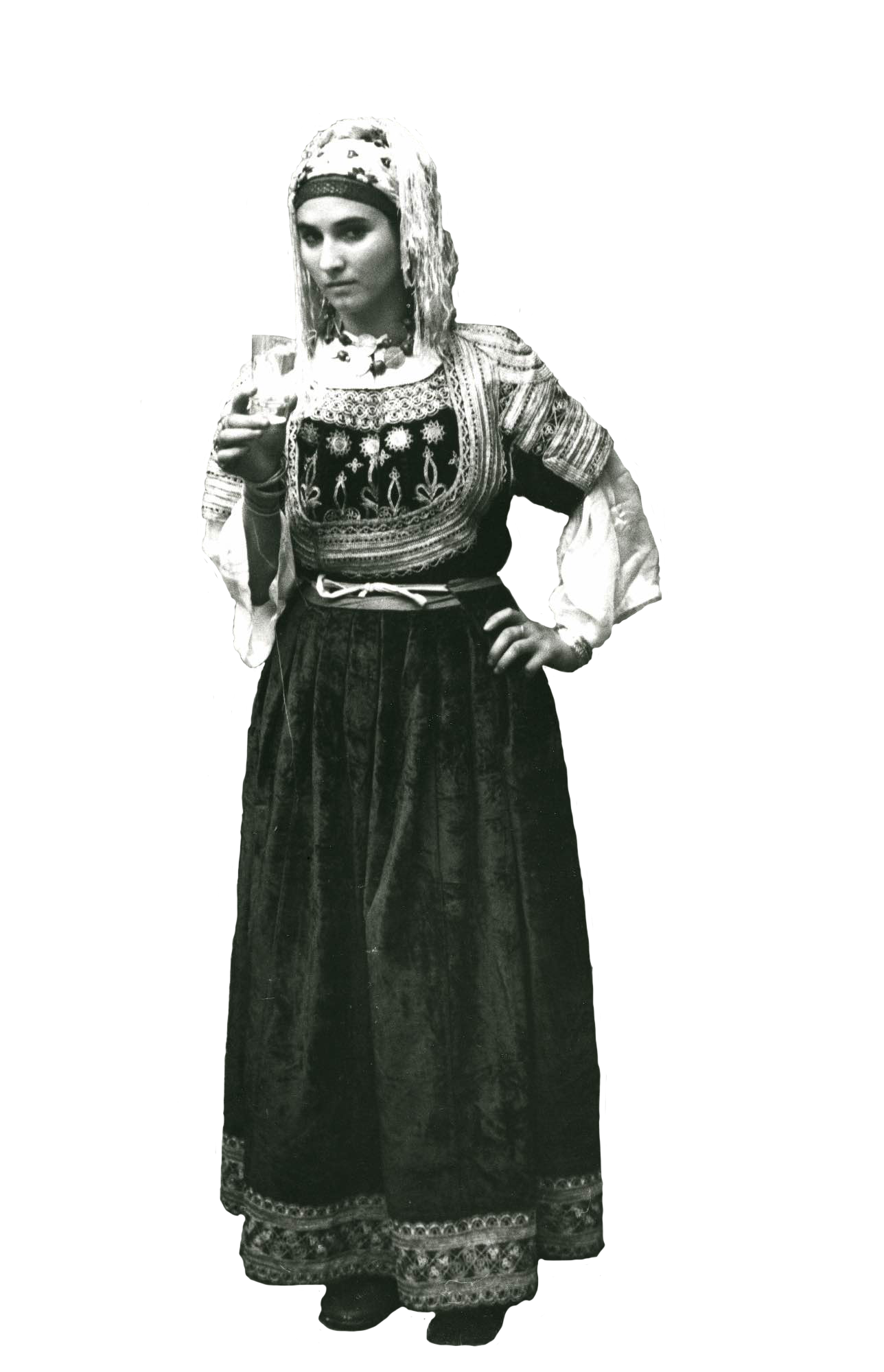
Kswa el-kbira, berberisca




Un vestido ke lo porta por la primera ves una mujer Djudia en su dia de boda. Es de influensia espanyola i se topa en las sivdades de Maroko del nord. Esto kontyene una fusta (zeltita), un bolero (gomablaz) ke se viste ariva de una plaka de peto brodada de oro (ktef), kon mangas lungas i anchas (kmam) apegados al bolero i un kushak de seda kuvyerto de oro (hzam) Despues dela boda la mujer lo viste en okazyones importantes
| Kswa el-kbira, berberisca, « large dress » |
Vanessa Paloma performs Jewish-Moroccan music in a bridal gown (2009).
Jansen, Maria Angela. “Keswa Kebira: The Jewish Moroccan Grand Costume.” Khil’a: Journal for Dress and Textiles of the Islamic World, vol. 1, Peeters, 2005, pp. 79-105.
Jouin, Jeanne. “Le Costume de la Femme Israélite au Maroc [The Costume of the Israelite Woman in Morocco].” Journal de la Sociéte des Africanistes [Journal of the Africanists Society], vol. 6, no. 2, 1936, pp. 167-85.
Juhasz, Esther, ed. “The Moroccan ‘Great Dress’.” The Jewish Wardrobe: From the Collection of The Israel Museum, Jerusalem, . Milan: 5 Continents Editions, 2012, pp. 264-69.
Juifs du Maroc : Photographies de Jean Besancenot, 1934-1937. Paris : Musée d’art et d’histoire du judaïsme, 2021.
Muller-Lancet, Aviva. “The Great Dress.” ‘Al Ha-Khasut Ve-Be’ikar al Ha-Meser: Levusham shel Yehudim Be-‘Artzot Ha-Islam [Garments with a Message: Jewish Wear in Islamic Lands], Jerusalem: Ben- Zvi Institute and the Hebrew University of Jerusalem, 2010, p. 208-21, 243-60.
Stillman, Yedida K. “The Costume of the Moroccan Jewish Woman.” Studies in Jewish Folklore, edited by F. Talmage, Cambridge, MA: Association for Jewish Studies, 1981, pp. 343-76.
Eskojer una lingua